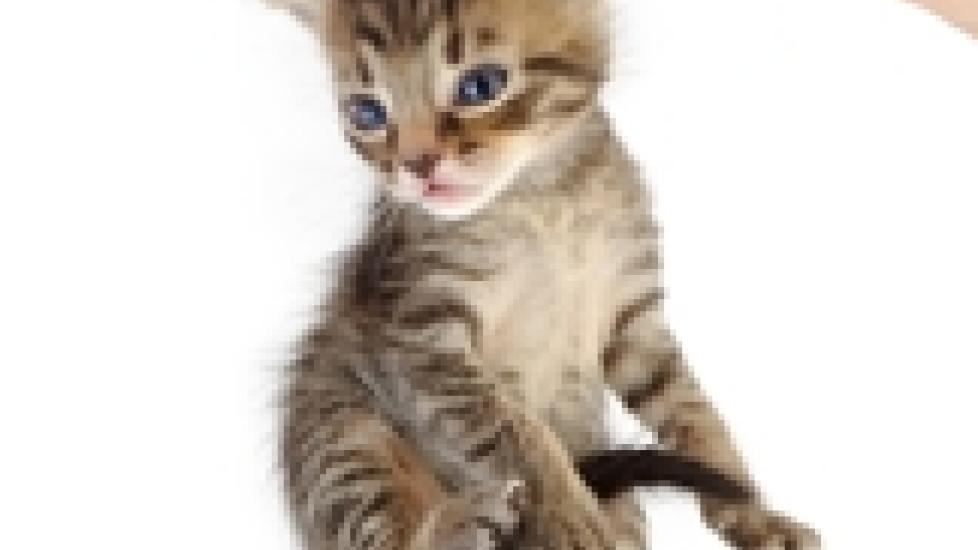How to Restrain a Cat the Right Way
Anyone who has worked in a veterinary hospital for a period of time eventually learns how to “scruff” a cat. This handling technique does have its place, but in general I think it is over used.
First, let’s talk about when and why scruffing is sometimes appropriate. To picture how a cat is scruffed, think of those videos that you’ve undoubtedly seen in which a mother cat, lion, tiger, etc. uses her mouth to pick up and carry her offspring by the loose skin on the back its neck. The kitten freezes and gets a somewhat spaced-out look on its face until mom puts it back down on the ground. As far as I’m aware, nobody is exactly sure of the biochemical mechanism behind this reaction (endorphin release is often cited), but it seems to be an evolutionary adaptation that allows for the safe and easy transport of young cats.
Scruffing by a human must activate the same pathways. In fact, any sort of pinching pressure along the top of a cat’s neck or upper back elicits the response in many individuals. I’ve heard anecdotal reports of veterinarians using clothes pins or binder clips and a device is available that is manufactured and sold specifically for this use.
In general, scruffing tends to be more effective in young versus adult animals, but individual responses vary regardless of age. Unlike feline moms, I avoid picking cats up by their scruff because most react in much the same manner to the neck pinch even if their weight remains supported by an exam table, carrier, chair, my other hand, etc. I do think that picking up an adult cat by the scruff can be uncomfortable, particularly if he or she is especially large.
Some cats seem to react poorly to almost any type of restraint, including scruffing, which creates a dilemma in the veterinary hospital with regards to the safety of personnel and the ability to perform procedures that are in the patient’s best interests. The worst of these “offenders” simply must be sedated. One quick poke of a syringe loaded with an anesthetic cocktail and everybody’s stress level plummets. Anything that needs to be done can be quickly accomplished with minimal risk to staff and cat.
Sedation is not needed for every cat that resists restraint, however. Some of these individuals are quite laid back and not aggressive, but when they feel like they couldn’t escape if they wanted to, they start to struggle. I call these the “less is more” kitties. While some form of restraint is necessary (I haven’t yet met any cats who will hold still for intravenous catheter placement on their own), less heavy-handed techniques stand the best chance of success.
I’ve found that resting the three middle fingers my left hand on top of the cat’s head and placing my pinkie and thumb under each ear works very well. I’ll scratch their head to distract them and increase their happy factor, but can easily apply firmer pressure or even reposition my hand to scruff them if necessary. The reaction I get from many individuals looks like a slightly less intense version of scruffing. Try it with your cat (assuming he or she is cooperative) and see if it works for you.

Dr. Jennifer Coates
Image: Sinelyov / Shutterstock
